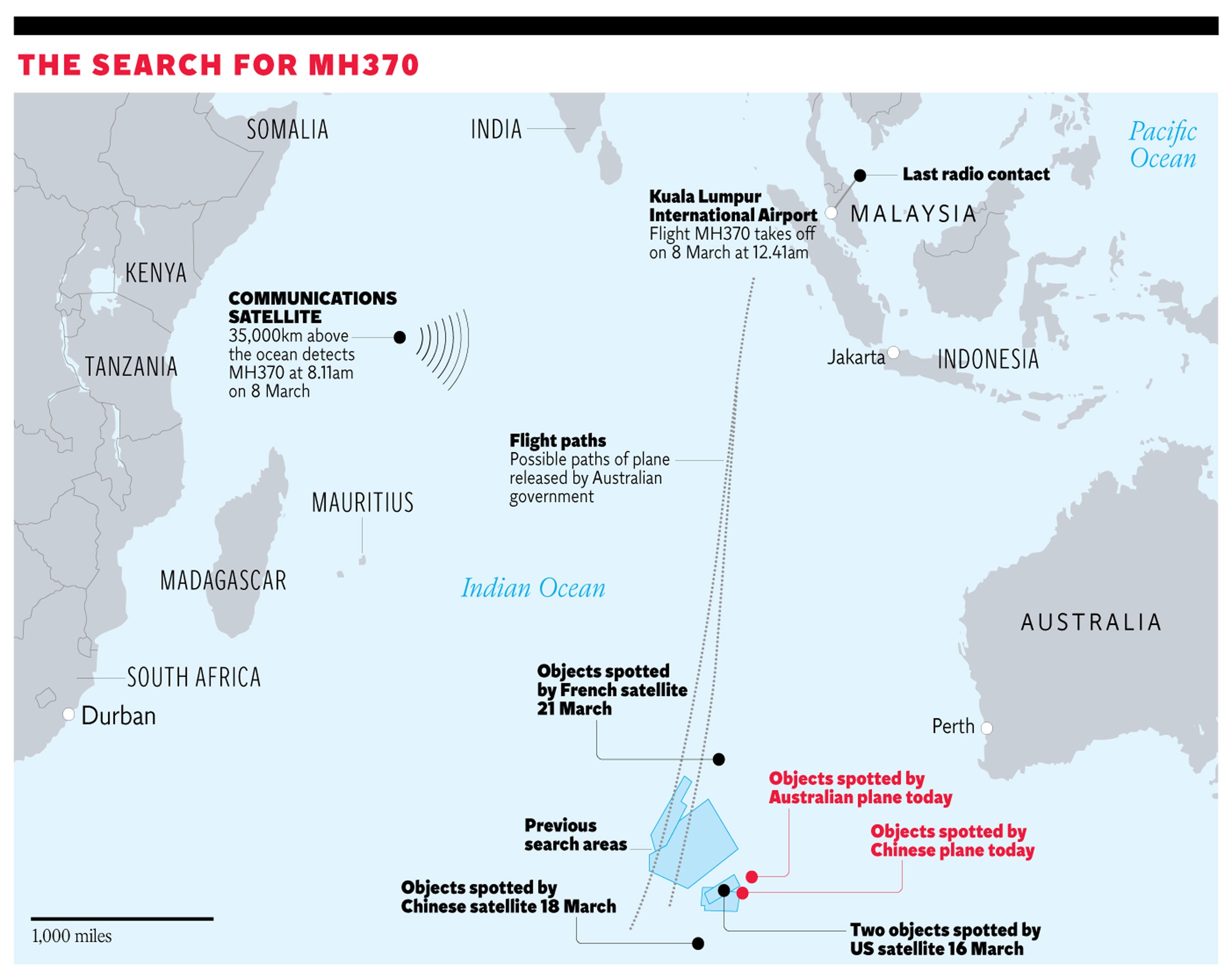Missing Malaysia Airlines Flight MH370: the detective work that led to the beginning of the mystery's end

Your support helps us to tell the story
From reproductive rights to climate change to Big Tech, The Independent is on the ground when the story is developing. Whether it's investigating the financials of Elon Musk's pro-Trump PAC or producing our latest documentary, 'The A Word', which shines a light on the American women fighting for reproductive rights, we know how important it is to parse out the facts from the messaging.
At such a critical moment in US history, we need reporters on the ground. Your donation allows us to keep sending journalists to speak to both sides of the story.
The Independent is trusted by Americans across the entire political spectrum. And unlike many other quality news outlets, we choose not to lock Americans out of our reporting and analysis with paywalls. We believe quality journalism should be available to everyone, paid for by those who can afford it.
Your support makes all the difference.Four hundred hours after flight MH370 was due to touch down at Beijing airport, the relatives of the 239 people on board were told that there was no hope of survivors.
The heartbreaking news was relayed, it appears, by English-language text message: “Malaysia Airlines deeply regrets that we have to assume that MH370 ended in the southern Indian Ocean.”
The decision to communicate news of the tragedy by such an inappropriate method is one of the many controversies surrounding the biggest mystery in modern history.
The search for the Boeing 777 had begun in the South China Sea between Malaysia and Vietnam. It later extended east into the Pacific and west to the Strait of Malacca, the Bay of Bengal and the deserts of central Asia. But the heartbreaking conclusion that the jet had come down west of Australia was drawn in offices in London and Farnborough – headquarters of Inmarsat and the Air Accidents Investigation Branch respectively.
The evidence was provided by assiduous analysis of satellite data that was never intended for this purpose. The hourly “pings,” or electronic handshakes, between the plane and a relatively elderly Inmarsat satellite over the Indian Ocean, demonstrated that the aircraft was aloft many hours after contact was lost.
Inmarsat shared the findings with investigators in Malaysia three days into the search, but it was not shared with the relatives – and the media – until a week after the disappearance.
As the search-and-rescue operation switches to the awful task of recovery, there are certain to be recriminations about the apparent delay in acknowledging these vital clues while resources were squandered on futile searches thousands of miles away.
Once Malaysia’s prime minister revealed the northern and southern arcs that had been derived from the last “ping,” scientists in the UK continued working to see what could be deduced from comparing the MH370 data with evidence of other flights in the region at the time. They concluded that the jet could only have taken the southern track.
In an investigation in which so much is unknown, at least the fuel load was known – and not enough remained from the final range of possible locations to reach land.
We are still nowhere near the end of the mystery, but evidence accumulated 22,250 miles above the Indian Ocean and processed in Britain provides at least a starting point in understanding what happened to MH370, its 227 passengers and 12 crew.
Join our commenting forum
Join thought-provoking conversations, follow other Independent readers and see their replies
Comments